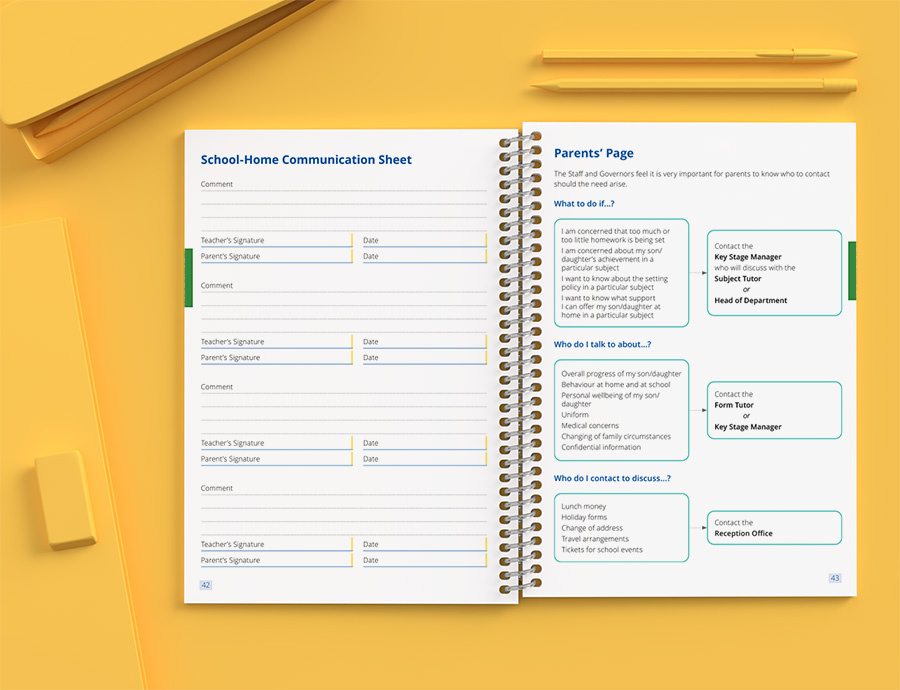In the contemporary educational ecosystem, the concept of equitable learning and opportunity has taken center stage. The UK, with its introduction of the pupil premium in 2011, has been a frontrunner in this. This funding mechanism, meticulously designed to support disadvantaged pupils, represents more than just a financial allocation; it embodies a promise to bridge the educational divide that often stems from socio-economic disparities.
As we delve deeper into the strategies schools can employ to optimise this resource, it’s important to understand the underlying ethos of the pupil premium and its transformative potential.

What is Pupil Premium?
In 2011, the UK government introduced a significant educational initiative known as the “pupil premium.” The primary purpose of this initiative is to address and reduce the educational attainment gap observed between disadvantaged pupils and their more advantaged peers. This gap, often resulting from socio-economic disparities, can have long-term implications for a child’s educational and career outcomes. The pupil premium was created to provide targeted resources and support to bridge this gap.
The way this fund is distributed is directly linked to the number of students who have been eligible for free school meals (FSM) over the last six years. Free school meals have historically been a metric to determine socio-economic disadvantage in the education sector. However, recognising that there are other groups of potentially vulnerable students, the pupil premium was extended to benefit children in care and those with parents serving in the Armed Forces.
When a school receives pupil premium funding, it has the autonomy to determine how best to use these additional resources. This flexible approach recognises the unique challenges and needs each school may face. However, with autonomy comes responsibility. Schools are accountable for their spending decisions and are expected to ensure the fund is used in evidence-based strategies that can support and uplift disadvantaged students.
While the main intention behind the pupil premium is clear, its deployment varies. Schools may opt to invest in additional tutoring, mental health support, extracurricular activities, or any other approach that they believe will directly benefit their disadvantaged student population. The overarching aim remains consistent: to ensure every child, regardless of their background or circumstances, has an equal opportunity to excel in their education and achieve their potential.
Metacognition and the Pupil Premium
Metacognition is essentially “thinking about our own thinking.” It’s about understanding how we learn and the best ways we grasp information. This process helps students see their strengths and areas they need to work on. It’s not just about studying; it’s about knowing how to study effectively.
Education today focuses on clear goals and measurable results. In this system, it’s essential to use methods that genuinely help students understand topics. Metacognition is such a method. Instead of just memorising, it emphasises truly understanding and using knowledge in different situations.
David Didau, a respected education expert, believes that metacognition is vital for all students, especially those with the pupil premium. These students might face extra challenges because of their backgrounds. Metacognitive techniques give them tools to overcome these challenges and succeed.
A great thing about metacognition is that it doesn’t cost much. Some teaching methods need a lot of materials or special training. But metacognition is about building personal skills and self-awareness. It’s a long-term skill that students can use throughout their lives.
For the pupil premium, which aims to help disadvantaged students, metacognition is a perfect fit. Schools can use this funding to teach metacognitive skills. They can train teachers, make learning resources, or create special class times for it.
Metacognition is a powerful way for schools to use pupil premium funds. It doesn’t just help students now; it gives them a skill they can use for life.
The Power of Feedback in Pupil Premium Expenditure:
Feedback is key to effective learning, showing students their strengths and areas needing improvement. It can be given verbally, on paper, or online. For those managing pupil premium funds, feedback is an economical and impactful strategy.
The Education Endowment Foundation (EEF) emphasises the need for a structured feedback approach. It’s not about volume but relevance and clarity. Feedback should be actionable and timely, guiding learners toward improvement. While immediate feedback can address misconceptions, delayed feedback might allow reflection.
Ultimately, incorporating feedback into pupil premium strategies means fostering a feedback-driven educational environment that supports all students, especially the disadvantaged.
Collaborative Learning: A Cost-Effective Approach for Pupil Premium
Collaborative learning, often seen as group work, encourages students to work together, using their combined strengths to tackle academic challenges. When it comes to using pupil premium allocations, this approach is highly effective.
Richer Learning Environment:
Every student brings a unique perspective and set of skills to the table. In a collaborative setting, these diverse views intermingle, leading to richer discussions and a deeper understanding of the subject matter. This diversity of thought can be particularly beneficial for pupil premium students, who might benefit from the varied approaches and solutions proposed by their peers.
Building Essential Soft Skills:
Collaborative learning is not just about academic outcomes. When students work together, they also develop vital soft skills like communication, teamwork, conflict resolution, and leadership. These skills are invaluable in real-world scenarios, and ensuring pupil premium students have opportunities to develop them is a prudent use of resources.
Cost-Effectiveness:
One of the most attractive features of collaborative learning is its inherent cost-effectiveness. Unlike strategies that may require substantial infrastructural or technological investments, collaborative learning can often be implemented using existing classroom setups and resources. This makes it an ideal choice for schools looking to optimise their pupil premium expenditure.
Enhanced Engagement:
Collaborative activities, by design, require active participation. This engagement can be particularly beneficial for pupil premium students who might sometimes feel disconnected or underrepresented. Being part of a team can foster a sense of belonging and relevance.
Flexible and Adaptable:
Collaborative learning is not one-size-fits-all. It can be molded and adapted to fit various subjects, grade levels, and learning objectives. Whether it’s a science project, a literature discussion, or a math problem-solving session, the collaborative approach can be seamlessly integrated.
Feedback Loop:
Working in groups allows students to receive instant feedback from their peers. This continuous loop of critique and validation can accelerate the learning process and help in identifying and addressing gaps more promptly.
Empowerment and Accountability:
As students take ownership of their learning in a collaborative environment, there’s an intrinsic sense of empowerment. They become more accountable, not just to themselves but also to their group members, fostering a culture of responsibility and commitment.
In the realm of pupil premium strategies, collaborative learning offers an enticing blend of academic and holistic development, all without placing undue financial strain on educational institutions. Schools keen on maximising the impact of their pupil premium funds would do well to consider and incorporate collaborative methodologies in their teaching arsenal.

Enhancing Parental Engagement through Pupil Premium
Parental engagement is more than a buzzword; it’s a pivotal catalyst that can significantly elevate a child’s academic journey and holistic development. When parents actively engage in their child’s education, the benefits are evident both inside the classroom and in broader aspects of the child’s life. For schools contemplating the best avenues for their pupil premium allocations, ramping up parental engagement presents an attractive, low-cost, high-reward proposition.
The Multiplier Effect:
Parents, being primary educators in a child’s life, have an outsized influence on their mindset, habits, and attitudes. When schools and parents align their efforts, the synergy can lead to improved student motivation, higher attendance rates, and more positive behavior both in and out of school.
Building a Holistic Support System:
Engaged parents can complement formal education by providing additional support at home, assisting with homework, and reinforcing concepts taught in school. This dual-tiered support system can be especially beneficial for pupil premium students who may require extra assistance.
Bridging Cultural and Socio-economic Gaps:
Parental engagement can help educators gain insights into the cultural, socio-economic, and personal backgrounds of pupil premium students. This understanding enables a more tailored approach to teaching, ensuring inclusivity and relevance.
Improving School-Parent Communication:
Pupil premium can be utilised to establish robust communication channels, such as regular parent-teacher meetings, digital communication platforms, feedback sessions, and the integration of custom school planners. Effective communication builds trust, creates transparency, and paves the way for collaborative problem-solving.
Empowering Parents:
Schools can organise workshops and seminars, funded through the pupil premium, to equip parents with the knowledge and tools they need to support their child’s learning. Topics can range from understanding the curriculum to recognising and addressing learning challenges.
Creating a Welcoming Environment:
It’s essential that parents feel they belong and are valued within the school community. This can be achieved by inviting them to school events, involving them in decision-making processes, and establishing parent forums or associations. Physical spaces, such as a parent’s lounge or dedicated meeting areas, can further foster this sense of inclusion.
Flexibility is Key:
Recognising that not all parents have the same availability or means to engage is crucial. Offering varied and flexible opportunities – from virtual meetings to after-hours events or weekend workshops – ensures that all parents, irrespective of their circumstances, have a chance to be involved.
Monitoring and Feedback:
Regularly assessing the success of parental engagement strategies is crucial. Using custom school planners makes it easier to gather feedback from parents, offering insights into what’s effective and what needs fine-tuning. By channeling pupil premium funds towards strengthening parental involvement, schools can significantly enhance student outcomes in both academic achievements and personal development.

Peer Tutoring and the Pupil Premium
Peer tutoring uses student collaboration to enhance learning. In terms of pupil premium, it’s a cost-effective method that promotes shared growth. Let’s explore the benefits and how to integrate peer tutoring into the pupil premium approach.
Dual Beneficiaries:
At the heart of peer tutoring lies the beautiful symmetry of mutual growth. While tutees gain clarity on topics and improve academically, tutors consolidate their knowledge, hone their teaching skills, and build a deeper understanding of the subject matter. It’s an enriched learning cycle where knowledge is not just imparted but also reinforced.
Building Socio-emotional Skills:
Beyond academic advantages, peer tutoring plays a pivotal role in cultivating socio-emotional skills. Through interactions, students learn empathy, patience, and active listening. It fosters an environment of trust, respect, and mutual understanding, which is crucial for holistic personal development.
Tailored Learning Experiences:
Peers often have an innate understanding of each other’s learning styles and can tailor their tutoring methods accordingly. This personal touch can sometimes be more effective than traditional teaching approaches, especially for students who might feel overwhelmed in larger classroom settings.
Boosting Confidence and Self-esteem:
For many students, particularly those from disadvantaged backgrounds, academic challenges can take a toll on their self-esteem. Peer tutoring offers a supportive environment where tutees can ask questions without fear of judgment. Successes, even if small, can lead to a significant boost in confidence.
Enhancing Communication and Interpersonal Skills:
Being a tutor demands clarity in communication, the ability to explain concepts lucidly, and patience. As students navigate these roles, they inadvertently enhance their communication and interpersonal skills, attributes that are invaluable in both academic and real-world scenarios.
Fostering a Collaborative School Culture:
Implementing peer tutoring promotes a culture of collaboration and mutual assistance within schools. It sends a strong message that every student has unique strengths and can contribute to the community.
Efficient Utilisation of Pupil Premium Funds:
Given its cost-effectiveness, schools can allocate pupil premium resources to set up and refine peer tutoring programs. This might involve training sessions for peer tutors, creating resource materials, or setting up dedicated spaces for tutoring sessions.
Feedback Loop and Continuous Improvement:
Just like any other educational strategy, it’s essential to monitor the effectiveness of peer tutoring. Collecting feedback from both tutors and tutees can provide insights into areas of improvement, ensuring that the program remains dynamic and responsive to students’ needs.
Diverse Peer Pairings:
To maximise the benefits of peer tutoring, schools can consider diverse pairings. For instance, pairing older students with younger ones, or students from different socio-economic backgrounds, can lead to richer interactions and broader perspectives.
Incorporating peer tutoring as a part of the pupil premium strategy can lead to a symbiotic academic environment where students not only learn from each other but also grow together. It’s an investment that yields academic, personal, and communal dividends, truly epitomising the essence of holistic education.
In Conclusion
The pupil premium, as an initiative, underscores a commitment to ensuring that every student, irrespective of their socio-economic background, has an equitable shot at academic excellence. As we explored the myriad strategies to optimise its utilisation—from metacognition to peer tutoring—it’s evident that there’s a rich tapestry of approaches available to schools. Each method, be it harnessing the power of feedback, collaborative learning, or enhancing parental engagement, has its unique strengths and offers different pathways to success.
At the core of these strategies is a shared ethos: to create a nurturing, inclusive, and enriched learning environment. These approaches are not merely academic tools; they’re bridges that connect students’ present challenges with a future of possibilities. They build not only academic prowess but also socio-emotional resilience, communication skills, and community ethos.
The diversity of these strategies offers schools the flexibility to craft a pupil premium expenditure plan tailored to their unique contexts and challenges. It’s about recognising and respecting individual needs while fostering a collective academic and personal growth narrative.
In conclusion, as schools chart their journey with the pupil premium, it’s crucial to remain dynamic, responsive, and rooted in the principle of equity. By doing so, we not only narrow the attainment gap but also cultivate empowered individuals ready to navigate the challenges of the 21st century.
Unlock Enhanced Learning: Explore Our Custom School Resources Now!
Discover how our custom school resources can seamlessly integrate into your teaching methods and offer students a richer, more organised academic journey.